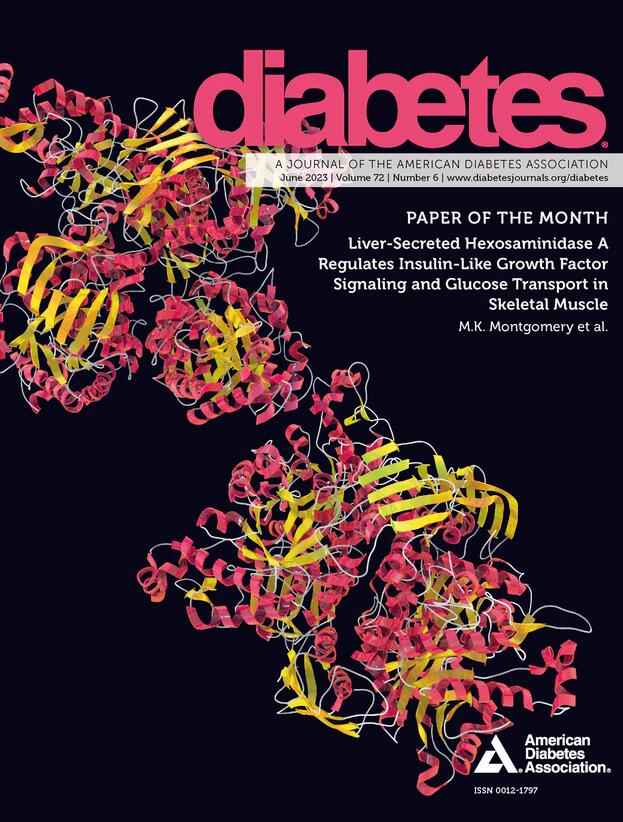138-OR: Cellular and Gene Therapy Development for Severe Hypoglycemia via Direct Innovative Cell Conversion
IF 6.2
1区 医学
Q1 ENDOCRINOLOGY & METABOLISM
引用次数: 0
Abstract
Introduction and Objective: Direct cell fate conversion (DIVER), which bypasses pluripotent stem cells, enables somatic cells to directly transform into functional target cells. This next-generation regenerative medicine technology holds promise for severe diabetes mellitus. However, efficiency, quality, and safety improvements remain essential for clinical translation. Methods: We developed a novel DIVER protocol incorporating Ngn3, MafA, Pdx1, and a newly identified "K-factor." This protocol induces pancreatic islet-like cells (DiBic) from somatic cells in a single step. The efficacy of these cells was assessed through transplantation into streptozotocin (STZ)-induced type 1 diabetic mice. Additionally, in vivo gene therapy was tested using transgenic K-factor expression. Results: Our technology achieved over 80% conversion efficiency to insulin-producing cells. Transplanted DiBic reduced blood glucose and HbA1c in diabetic mice. The in vivo gene therapy normalized hyperglycemia within days. Immunohistochemistry confirmed robust insulin production in converted cells, demonstrating K-factor's ability to induce direct somatic cell reprogramming with high efficiency. Conclusion: Our findings establish a highly efficient and reproducible DIVER technology for cellular and gene therapy applications. This platform has transformative potential for the treatment of diabetes, either as a standalone regenerative therapy or in combination with existing treatments such as insulin injections or stem cell technologies. This study represents a critical step toward the practical application of regenerative medicine for severe diabetes mellitus. Disclosure M. Matsumoto: None. Funding Japan Agency for Medical Research and development, AMED (24bm1223024h0001, 24ym0126110h0002), JSPS KAKENHI (JP24936409), JST START Project Promotion Type (JPMJSF2307), Juntendo President Special Research Program Seeds A (GP22A-004, 2022-24), Kawano Masanori Memorial Public Interest Incorporated Foundation for Promotion of Pediatrics, KOSE Cosmetology Research Foundation138-OR:通过直接创新细胞转化治疗严重低血糖的细胞和基因治疗进展
简介与目的:直接细胞命运转化(Direct cell fate conversion, DIVER)是一种绕过多能干细胞,使体细胞直接转化为功能靶细胞的方法。这种下一代再生医学技术有望治疗严重的糖尿病。然而,提高临床翻译的效率、质量和安全性仍然是必不可少的。方法:我们开发了一种新的DIVER方案,包括Ngn3、MafA、Pdx1和新发现的“k因子”。该方案在一个步骤中从体细胞诱导胰岛样细胞(DiBic)。通过将这些细胞移植到链脲佐菌素(STZ)诱导的1型糖尿病小鼠体内来评估其疗效。此外,使用转基因k因子表达进行体内基因治疗试验。结果:我们的技术使胰岛素生成细胞的转化效率达到80%以上。移植的DiBic降低了糖尿病小鼠的血糖和HbA1c。体内基因治疗使高血糖在几天内恢复正常。免疫组织化学证实了转化细胞中胰岛素的强劲产生,证明了k因子能够高效地直接诱导体细胞重编程。结论:我们的研究结果为细胞和基因治疗应用建立了一种高效、可重复的DIVER技术。该平台在糖尿病治疗方面具有变革性的潜力,无论是作为独立的再生疗法,还是与胰岛素注射或干细胞技术等现有治疗方法相结合。本研究为再生医学在重症糖尿病的实际应用迈出了关键的一步。松本先生:没有。资助项目:日本医学研究开发机构AMED (24bm1223024h0001, 24ym0126110h0002), JSPS KAKENHI (JP24936409), JST START项目推进类型(JPMJSF2307),俊天道社长特别研究计划种子A (gp22a - 004,2022 -24),川野正森纪念公益法人儿科促进基金会,KOSE美容研究基金会
本文章由计算机程序翻译,如有差异,请以英文原文为准。
求助全文
约1分钟内获得全文
求助全文
来源期刊

Diabetes
医学-内分泌学与代谢
CiteScore
12.50
自引率
2.60%
发文量
1968
审稿时长
1 months
期刊介绍:
Diabetes is a scientific journal that publishes original research exploring the physiological and pathophysiological aspects of diabetes mellitus. We encourage submissions of manuscripts pertaining to laboratory, animal, or human research, covering a wide range of topics. Our primary focus is on investigative reports investigating various aspects such as the development and progression of diabetes, along with its associated complications. We also welcome studies delving into normal and pathological pancreatic islet function and intermediary metabolism, as well as exploring the mechanisms of drug and hormone action from a pharmacological perspective. Additionally, we encourage submissions that delve into the biochemical and molecular aspects of both normal and abnormal biological processes.
However, it is important to note that we do not publish studies relating to diabetes education or the application of accepted therapeutic and diagnostic approaches to patients with diabetes mellitus. Our aim is to provide a platform for research that contributes to advancing our understanding of the underlying mechanisms and processes of diabetes.
 求助内容:
求助内容: 应助结果提醒方式:
应助结果提醒方式:


